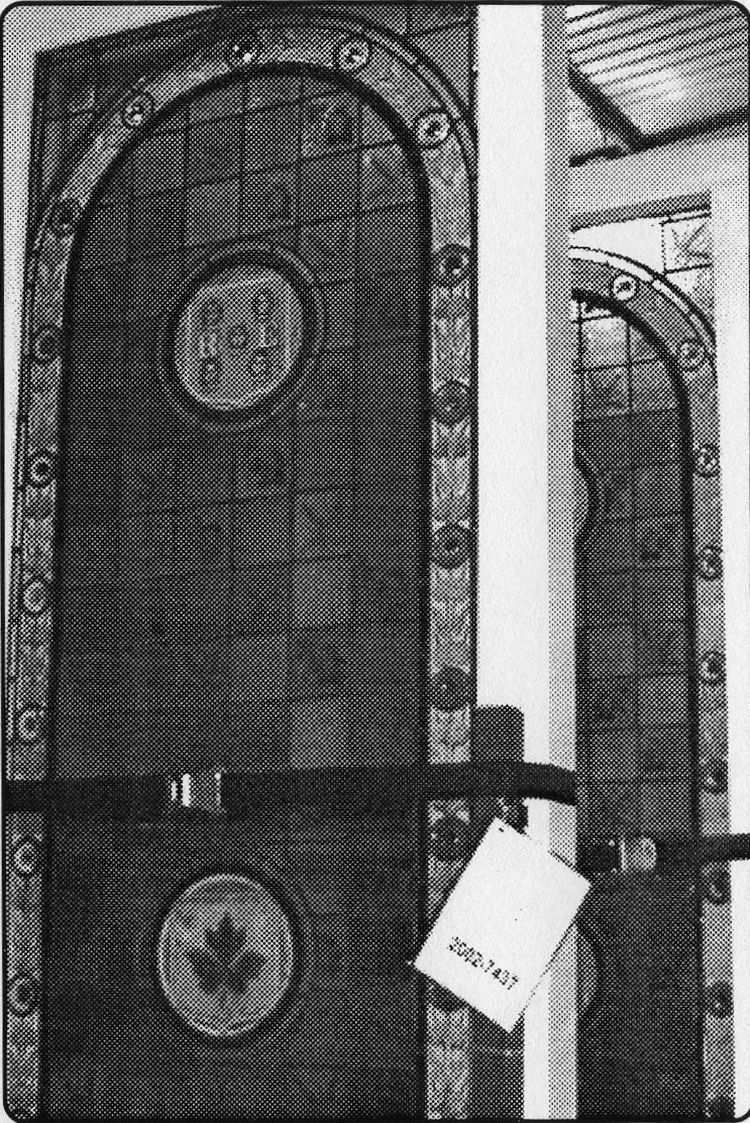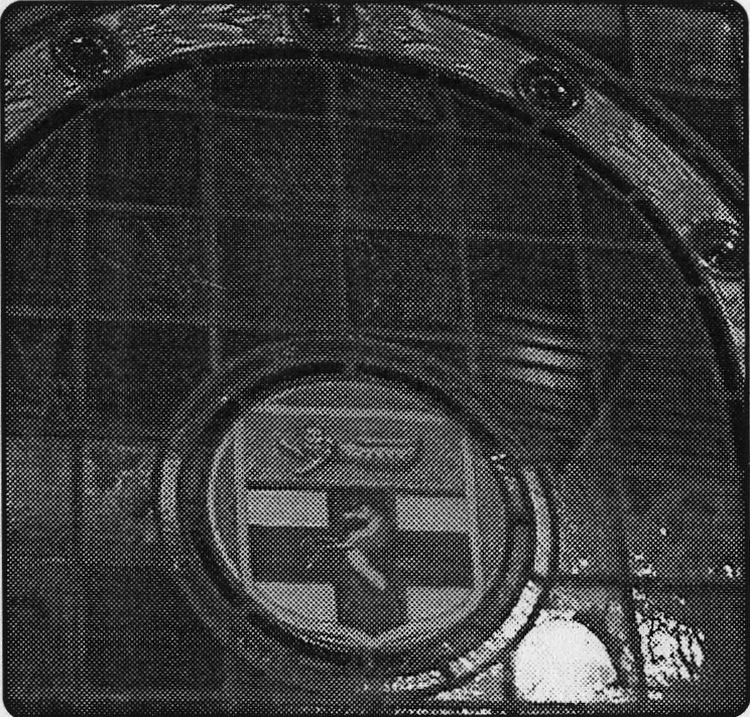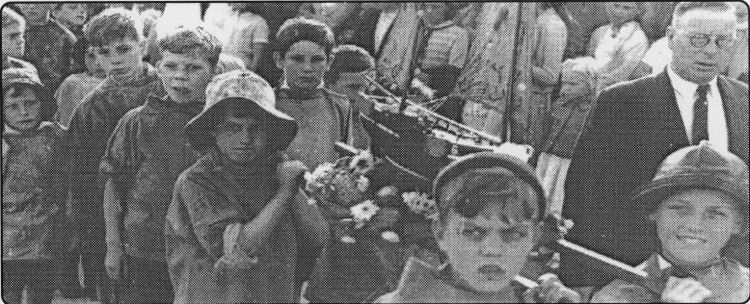
Published 14 November 2002



CALLING railway enthusiasts! From Richard Bourne, of Haxby, Yorkshire I
received an interesting e-mail inquiry about a pair of beautifully restored
stained glass windows acquired recently by the National Railway museum in
York.
The windows were once owned by the British Transport Commission and there
was a suggestion they were from Dover Town Station - demolished decades ago
- dating from the opening of the line.
They each contain two crests. "One has the arms of the South Eastern
Railway, I think," says Richard, "and that of Kent. The other is a bit more
of a mystery, with neither crest being readily recognisable."
South Eastern and Chatham Railway Society's expert on such things was
doubtful the windows were from railway premises at all, but thought they
might be from a Dover hotel, perhaps the Lord Warden, which of course, was
built by the railway.
“Great shame”
When I received Richard's e-mail I thought of railway enthusiast and author
Brian Hart, son of Eric Hart, of Folkestone. He has written a number of
books about railways, including the Elham Valley Railway and has another due
out before Christmas.
I sent Brian copies of the pictures of the stained glass windows and he told
me: "I recognised them immediately. They belonged to Shorncliffe Station (it
will always be that to me - never "Folkestone West"- ugh!)
"I remember them well and used to gaze on them as a boy in the 1950s/60s.
They were in the spacious booking hall on the up (London) side. The coat of
arms containing the amalgamated lion/ship.
above a white horse on the English cross, belongs to the South Eastern
Railway, whilst the white horse of Kent on a red shield is reproduced on the
lower half of that particular window.
"The other window bears the maple leaf of Canada and this window was
specially produced and donated in an act of commemoration to honour all
those Canadian soldiers who gave their lives during the Great War.
"It seems likely that the upper shield belongs to a particular regiment,
possibly the initials 'R.E.' standing for Royal Engineers?"
Brian, who is hoping his latest book "Folkestone's Railways" will be
published before Christmas, adds that he remembers the windows being taken
out of the station during the latter part of the 1960s - and he believes
there were others.
The late Douglas Pidding, he said, who was a Lyminge councillor and former
BR worker, showed him one when he lived near Lyminge Station.
Another, he had been told, depicted a locomotive at Sandgate Station. He did
not recall it but wonders if it could have been in the spacious refreshment
rooms on the up side of the station.
Shorncliffe was once a very important station, said Brian, its refreshment
rooms being exactly like those in the film "Brief Encounter."
"It's a great shame the windows have been forgotten and the purpose of their
particular location lost in relation to the sacrifice made by the brave
Canadian soldiers."
Brian likened the 'deposit 'of this window in the National Railway Museum at
York, to moving the Cenotaph to the Imperial War Museum! On the other hand,
he added, at least they are preserved.
But it would be a lot better, in my opinion, if they were installed in a
surviving Folkestone station!
)
Memorial
BLACK and white images cannot do justice to these two stained glass windows,
from the old Shorncliffe Station, which are now in the National Railway
Museum in York. The Canadian Forces memorial window is shown on the right.
TONY Dickinson, of Wear Bay Road, sent in this 1950s photo of the
traditional "Blessing of the Fisheries" parade. Fishermen's sons in the
procession carrying a model fishing boat include G Featherbe, on the left,
Tony on the right, D Woods and J Fisher.
lL
 |
Folkestone preparing for official visit of the Kaiser
*1 QnO THIE Kaiser was due to pay a courtesy ■LZrvr^ visit to Folkestone
and there were hopes that he might visit the cemetery in which were the
graves of a hundred German victims of the collision between the warships
Grosser Kurfurst and the Konig Williem during an exercise five miles off
the port back in 1878. Altogether 300 moil died. A fish shop propnetoi
by the name of Smith displayed what was said to be the biggest skate
ever landed at the port. Caught in the nets of a fisherman named Harris,
it wjs nearly 10ft from tip to tail <nul 8ft across and weighed 280lbs.
Herald writer Felix told how a Mr Moody of Sandgate used to "cure"
unusual specimens and they were for years a feature of the Royal Oak of
which he was mine host. Suspended from the ceiling they attracted
visitors from far and wide, but were eventually removed to Birmingham
and displayed there. There were mixed views in the chamber of commerce
about an offer from the London Chamber to help youths get jobs in
London. Felix wrote of people with weak nerves, being sometimes
terrified by noisy street hawkers offering "Foine plaice and soule,
brockler and taters."
|
Pfizers take over factory and reveal job boost plan
t* QPO FOLKESTONE Town Council approved ^«/0^the expenditure of £150 011
a Coronation firework display. Sutgical Plastics Ltd was reported to
have sold out to Pfizer Ltd, of Sandwich who wore looking around for
another factory site in the district to begin production early in the
New Year. The foundation stone of a new Lyminge Methodist Church was
laid, to replace the one destroyed by a flying bomb in August 1944.
Unemployment figuro for the Folkestone, Hythe and New Romney area in
Octobcr was 856 Building tiade workers formed the largest group.
Folkestone Co-operative Drivers' Club, formed in 1950, was 40 strong and
searching fur suit.iblc club premises of its own. Group Officer M.H.
Barnett was the new CO of Hawkinge WRAF depot. A council alderman
declared it would be vandalism if the East Kent Road Car Co implemented
its plans for a new bus station, approved on a majority vote by the Town
Council. The Council restricted the height of development to two storeys
but approved removal of all trees, to be replaced with new trees, shrubs
and grass verges where possible. The alderman protested that the trees
were an attractive feature of the town centre.
|
Double tragedy as family car plunges into a dyke
«f QO7TWO DIED when a car carrying five >L«/^ / people overturned and
plunged into a flooded dyke on the Ham Street/New Romney road as they
tried to avoid an oncoming car. Four managed to get out but one man died
and a child aged three, from Bayswater, later died of pneumonia. Plans
for a public library at Cheriton hit objections from a group of
ratepayers who objected to the cost, of what seems a modest £12,160, but
then Cheriton then had only about 8,700 residents. There was talk of a
9d rate. The outcome was that there had to be a local inquiry - which
also costs money. It seems to have been such a 'hot potato/the Herald
devoted four broadsheet columns to a report of the hearing. A branch of
the Association of Men of Kent and Kentish Men was formed in Hythe and
Herald writer Felix expressed the hope members would do their bit to
help push the sales of the hardback book "Biography of Kent and Kentish
Men" by a Hythe author, the late Revd Dr A Winnifrith. The book was
printed and published by the Folkestone Herald's former printing works
in The Bayle, now the site of a block of flats.
|
District hit by power cuts -as firemen plan pay strike
■<| Q^“»TWENTY-five years ago this month ■Lt/ I I guess what, Folkestone
was in the grip of the nightmare of a power 'black-out' chaos and local
firemen, concerned at "constantly low wage settlements," said they were
ready to strike as part of county-wide industrial action* despite the
added fire danger of candles, paraffin lamps and oil heaters being used
by some families in the emergency. This was not due to a storm, although
the district was hit by gale force winds, but unofficial action by power
station workers. The problem was serious enough for the Herald to
publish a cut-out-and-keep-guide for readers telling them when to expect
cuts in power supplies. A warning was issued that patients could die in
local nursing homes, such as one in Hythe, if cuts came during
operations. The Royal Victoria Hospital Folkestone and Etchinghiil
Hospital had power generators. Local firemen were warning that an
all-out strike was imminent if the 10% limit on wage rises wasn't
lifted. Drivers were warned to be particularly careful during black-outs
when traffic lights would not be working, and a "Good Neighbour" appeal
went out to all householders to keep an eye on elderly or infirm
neighbours. |
|




